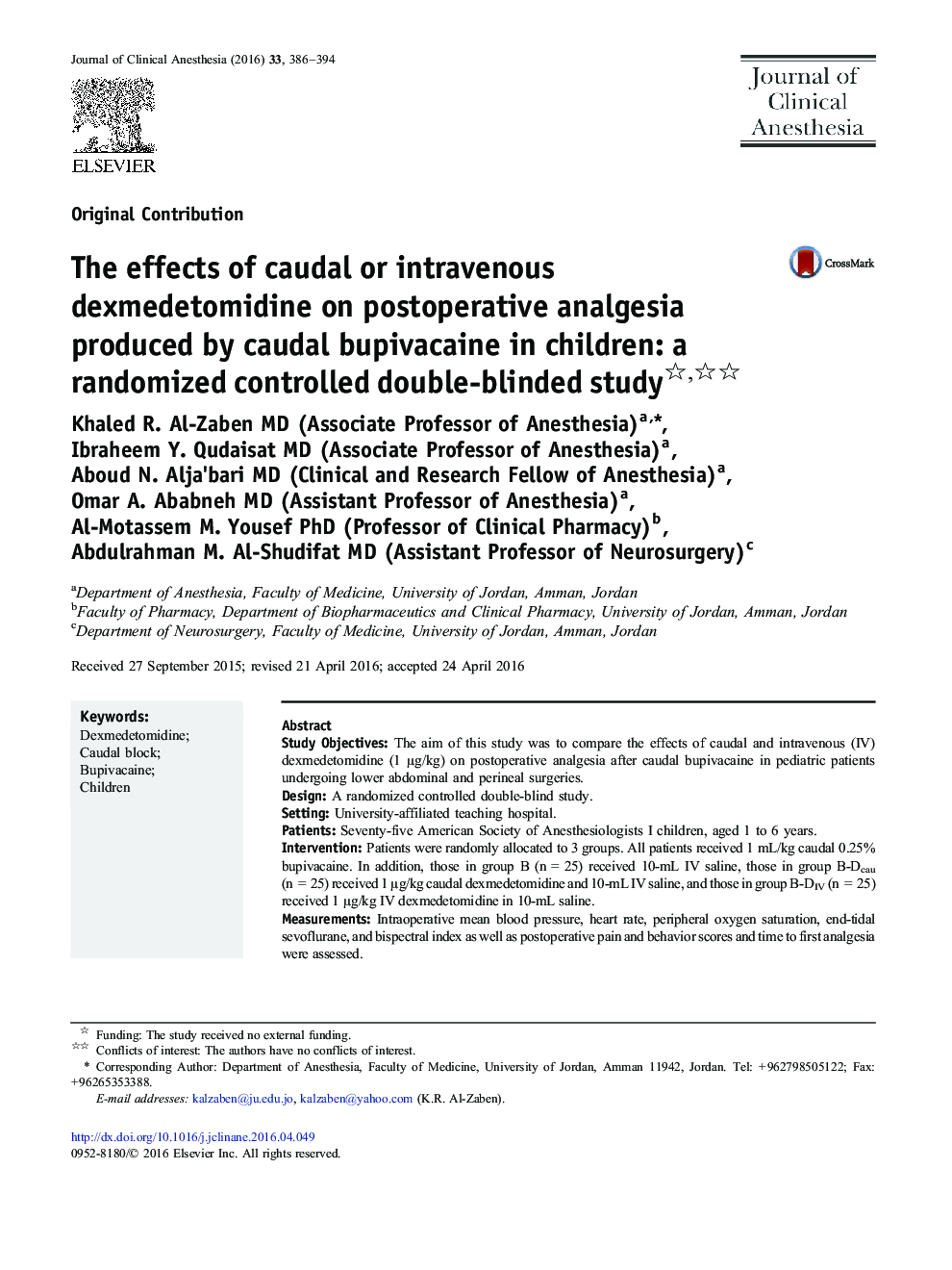| کد مقاله | کد نشریه | سال انتشار | مقاله انگلیسی | نسخه تمام متن |
|---|---|---|---|---|
| 2762128 | 1567657 | 2016 | 9 صفحه PDF | دانلود رایگان |
• Dexmedetomidine and caudal bupivacaine are used for surgical analgesia in children.
• Caudal administration had greater efficacy than IV administration.
• Neuroaxial adrenoceptors play a greater role than peripheral in pain processing.
Study ObjectivesThe aim of this study was to compare the effects of caudal and intravenous (IV) dexmedetomidine (1 μg/kg) on postoperative analgesia after caudal bupivacaine in pediatric patients undergoing lower abdominal and perineal surgeries.DesignA randomized controlled double-blind study.SettingUniversity-affiliated teaching hospital.PatientsSeventy-five American Society of Anesthesiologists I children, aged 1 to 6 years.InterventionPatients were randomly allocated to 3 groups. All patients received 1 mL/kg caudal 0.25% bupivacaine. In addition, those in group B (n = 25) received 10-mL IV saline, those in group B-Dcau (n = 25) received 1 μg/kg caudal dexmedetomidine and 10-mL IV saline, and those in group B-DIV (n = 25) received 1 μg/kg IV dexmedetomidine in 10-mL saline.MeasurementsIntraoperative mean blood pressure, heart rate, peripheral oxygen saturation, end-tidal sevoflurane, and bispectral index as well as postoperative pain and behavior scores and time to first analgesia were assessed.Main resultsGroup B-Dcau had a significantly longer time to first rescue analgesia than groups B-DIV and B, with mean (SD) values of 14.4 (7.5), 9.18 (2.7), and 6.6 (2.5) hours, respectively (P < .05). Fewer patients in group B-Dcau (n = 16) required rescue analgesia during the first 24 hours postoperatively compared to group B (n = 24) and group B-DIV (n = 20) (P < .05).Groups B-Dcau and B-DIV had lower pain and behavior scores than Group B. Eight patients Group B had agitation compared to 2 in Group B-DIV and 0 in Group B-Dcau. Four patients in Group B-DIV developed bradycardia and hypotension during surgery.ConclusionsCompared to IV administration, caudal administration of dexmedetomidine during caudal bupivacaine anesthesia provided prolonged postoperative analgesia and a greater analgesic sparing effect without significant side effects. This suggests a greater role of neuraxial compared to that of peripheral α-2 adrenoceptors in pain processing.
Graphical AbstractFigure optionsDownload high-quality image (55 K)Download as PowerPoint slide
Journal: Journal of Clinical Anesthesia - Volume 33, September 2016, Pages 386–394
